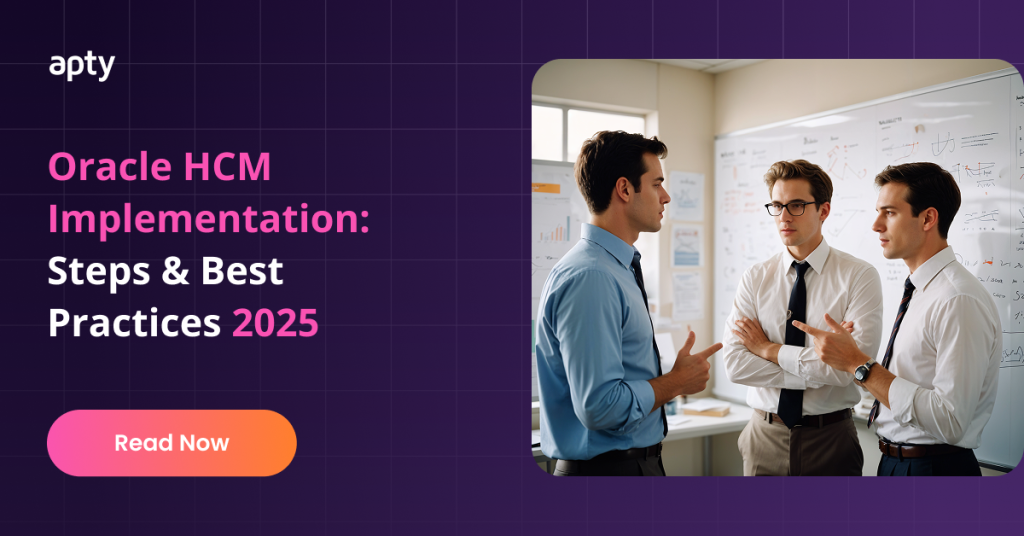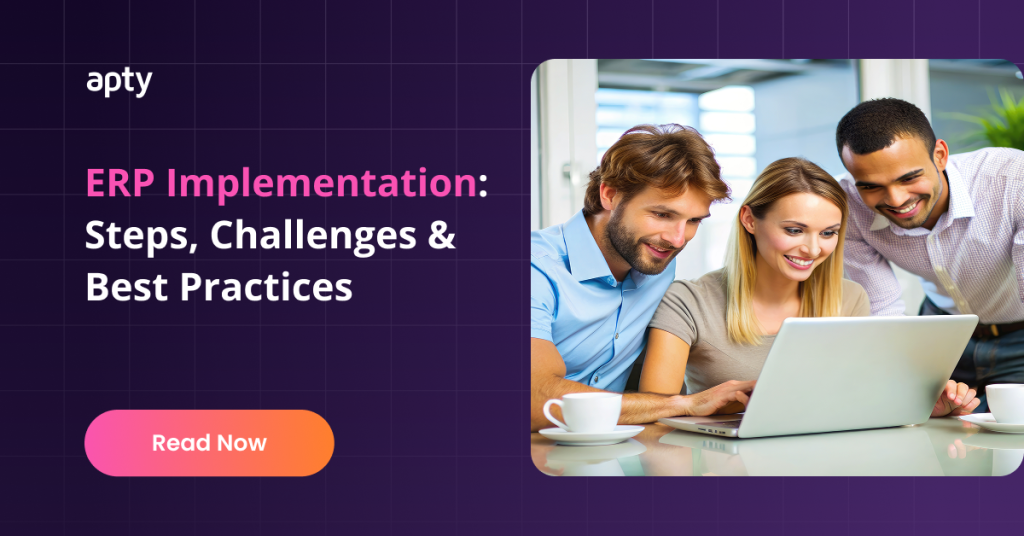Why Should SaaS Enterprises Adopt Value Realization?
The rise of Software as a Service (SaaS) in the enterprise world is undeniable. According to a study, the global SaaS market is The global Software as a Service (SaaS) market is projected to grow from $273.55 billion in 2023 to $908.21 billion by 2030, at a CAGR of 18.7%, indicating a paradigm shift in how businesses approach software solutions. However, the real question lies in whether companies are truly maximizing the potential of these investments. Another study by Productiv Enterprises Deploy About 364 Applications on Average— yet Only 55% Are not Used Regularly.
The concept of “Value Realization” comes into sharp focus against this backdrop. As enterprises make significant outlays on SaaS solutions, the pressure to demonstrate ROI intensifies. Adopting the latest technologies is no longer sufficient; businesses must ensure these technologies are aligned with strategic objectives and deliver measurable value.
Let’s delve deep into the intricacies of Value Realization in the enterprise SaaS and why it matters.
What is Value Realization?
Value Realization measures how well a software solution fulfills its intended purpose, meets objectives, and generates a return on investment (ROI). It revolves around defining, tracking, and optimizing value metrics to achieve the desired ROI. Without active measures for Value Realization, even the most promising software solutions can become mere cost centers instead of value drivers.
This concept goes beyond implementation; it’s about aligning the Software’s capabilities with strategic goals and ensuring continued value generation.
It is a comprehensive framework that helps enterprises quantify the efficacy and ROI of their SaaS investments. This multi-faceted approach goes beyond just deploying Software and ticking boxes. It addresses a set of key questions that every C-level executive ponders:
- Are we extracting total value from our software investments?
- How does this SaaS solution align with our broader business objectives?
- What specific metrics indicate we are getting our money’s worth?
It is about achieving an ideal state where your Software isn’t just a tool but a strategic asset. It involves ongoing planning, measuring, and optimizing software capabilities to ensure they contribute to achieving business goals, be it increasing revenue, improving customer satisfaction, or driving operational efficiencies.
Value Realization is a north star in this saturated market where every SaaS vendor promises game-changing results. It helps you separate the wheat from the chaff by focusing on adoption and effective Software adoption—where software utility is directly aligned with business strategy.
Why Should SaaS Enterprises Adopt Value Realization?
For today’s C-suite leaders, steering a SaaS enterprise through the sea of competitive forces is no small feat. Every decision is magnified, and the stakes are higher than ever. Adopting a Software Value Realization Platform becomes less of a choice and more of an imperative. The benefits of this approach are manifold, providing a competitive edge, maximizing ROI, and ensuring strategic alignment and accountability. Focusing on Value Realization transforms SaaS investments from uncertain gambles into strategic assets that bring Enterprise Software Value. Here’s why:

- Competitive Edge: In a market where every SaaS provider promises to be a game-changer, establishing a measurable Value Realization model can set you apart. For C-level executives, this provides a concrete way to demonstrate leadership and vision, as businesses that excel in Value Realization tend to retain customers and expand market share more effectively.
- Maximized ROI: As the individual often responsible for the bottom line, maximizing ROI is undoubtedly a key concern. A structured approach to Value Realization can act as your roadmap, identifying areas where software utilization could be enhanced to positively impact the financials.
- Strategic Alignment: When software investments are intricately tied to your corporate goals, they become strategic assets rather than mere operational tools. As an executive, aligning SaaS tools with organizational objectives should be top-of-mind to ensure that budgets are allocated effectively.
- Accountability: With clearly defined value metrics and KPIs, the organization has greater transparency and accountability. This offers the C-suite real-time insights into performance and facilitates data-driven decision-making, enhancing your ability to steer the organization successfully.
- Long-term Success: Value Realization is not a ‘set it and forget it’ business component; it requires ongoing management. A commitment to this approach can give executive leadership the insights needed to navigate market volatility and position the enterprise for long-term success.
For any executive in the SaaS realm, ignoring the implications of Value Realization equates to leaving money—and opportunities—on the table. Transform your SaaS investments from uncertain gambles into strategic assets by making Value Realization a cornerstone of your enterprise strategy
Important Value Realization Metrics to Track
Tracking the proper metrics is pivotal in successfully realizing the value of your SaaS investments. Understanding and regularly checking the critical metrics through a Software Value Realization Platform is crucial for any enterprise focused on maximizing the ROI of its SaaS investments. Here’s a breakdown of the essential metrics that executives should focus on:

- Customer Lifetime Value (CLV): This is the total revenue you expect to earn from customers throughout their relationship with your business. A rising CLV often correlates with a successfully realized software value.
- Customer Acquisition Cost (CAC): While acquiring customers is necessary, the costs should be justifiable. Tracking CAC against CLV provides essential insights into the efficacy of your Software and its value proposition.
- Monthly Recurring Revenue (MRR) and Annual Recurring Revenue (ARR): These metrics provide quick insights into the generated revenue. If these are on an upward trajectory, it’s a good sign that your Software delivers value.
- Churn Rate: The percentage of customers who stop using your Software within a specific period. A low churn rate indicates high customer satisfaction and high-value realization.
- Net Promoter Score (NPS): This measures customer satisfaction and loyalty. A high NPS score usually means that your Software is not just meeting but exceeding customer expectations, thereby adding value.
- User Engagement Metrics: Metrics like daily active users (DAU), monthly active users (MAU), and feature usage rates tell you how engaged users are with your Software. High engagement often translates to high-value realization.
- Time-to-Value (TTV): This measures how quickly users can realize value from the product after using it. A lower TTV indicates a quicker realization of software value, a critical executive metric.
Understanding and tracking these metrics is beneficial—it’s crucial for any enterprise focused on maximizing the ROI of its SaaS investments. By regularly monitoring these KPIs, leadership can make data-backed decisions that align with the overarching aim of achieving value realization.
Stages of Value Realization
The journey to achieving optimal value from your SaaS investments is not a one-time event; it’s a continuous process that can be broken down into several stages.
These stages enable executives to actively participate in the value process, ensuring that investments are more than just operational costs—they are strategic assets contributing to Enterprise Software Value and overall value optimization.

- Identification & Planning: The first stage involves identifying the goals you aim to achieve with your Software. Here, the focus should be on how these objectives align with your company’s broader strategic aims.
- Implementation & Deployment: Once goals are set, the next step involves integrating the Software into your existing workflows. The Software should be configured to meet specific business needs, ensuring that every feature contributes to value generation.
- Monitoring & Measurement: This stage is where the earlier metrics come into play. Establish KPIs and closely monitor them to measure how well the Software fulfills its objectives.
- Optimization: Based on the insights gathered, you’ll likely find areas that could be improved. This stage involves tweaking configurations, streamlining workflows, or re-evaluating your original goals.
- Scaling: Once the value is realized on a smaller scale, the Software’s usage can be scaled across different departments or even globally. This is essential for achieving a more significant cumulative impact.
- Review & Adjustment: The SaaS landscape is constantly changing. Regular inspections ensure that your Software continues aligning with evolving business goals and adjustments are made to maintain high-value realization.
- Continuous Monitoring: The final stage involves ongoing scrutiny to ensure your SaaS tools consistently deliver value. This is a never-ending process and requires regular updates to KPIs and objectives.
Understanding these stages enables executives and leaders to actively participate in the value process from scratch, ensuring that their investments are more than just operational costs—they are strategic assets contributing to the enterprise’s overall objectives.
Benefits of Value Realization
Understanding the concept and stages of Value Realization is vital, but the tangible benefits are even more impactful. These range from improved financial performance and stakeholder satisfaction to informed decision-making, competitive advantage, scalability, risk mitigation, and alignment with business goals. Focusing on Value Realization through a Software Value Realization Platform can significantly impact an organization’s success trajectory. Here’s a closer look:

Improved Financial Performance
With a keen focus on ROI, businesses can optimize their software investments, turning them from operational expenses into strategic assets contributing to the bottom line.
Enhanced Stakeholder Satisfaction
Value Realization brings satisfaction to customers and employees, shareholders, and other stakeholders. When everyone sees the value, it creates a positive environment conducive to growth.
Informed Decision-Making
A structured approach to Value Realization allows for data-backed decision-making. This can be a game-changer in steering the company in the right direction.
Competitive Advantage
In an ever-competitive SaaS landscape, realizing more value from your investments can be the edge you need to outperform competitors.
Scalability
Achieving value realization on a smaller scale makes scaling easier. As your business grows, you’re better equipped to maximize the value of new SaaS investments.
Risk Mitigation
With constant monitoring and adjustments, you’re more likely to spot potential issues before they escalate, mitigating risks associated with software investments.
Alignment with Business Goals
One of the most significant benefits is that Value Realization ensures your software investments are in direct alignment with your business objectives, making every dollar spent truly count.
Investing in Software is inevitable for modern enterprises. What differentiates successful organizations is how they extract value from these inevitable investments. The benefits of focusing on Value Realization are multi-fold and can significantly impact an organization’s success trajectory.
The Path to Continuous Value Realization for SaaS Investments
Achieving Value Realization is not a one-time endeavor; it’s a commitment to continuous assessment, optimization, and alignment with business goals. For executives keen on Enterprise Software Value, adopting a structured Value Realization Framework with well-defined metrics and KPIs serves as an organizational roadmap, effectively embedding value tracking into your corporate culture.
Given the importance, C-suite leadership should spearhead this initiative to secure the necessary attention and resources.
Digital Adoption Platforms (DAPs) like Apty are instrumental in achieving Continuous Value Realization. They shorten the Time-to-Value (TTV) and make software adoption more straightforward and effective. These Software Value Realization Platforms align software functionalities with your strategic objectives, significantly aiding the Value Optimization process.

Continuous audits and adjustments are equally critical. Your organization needs to evaluate its software investments and corresponding value metrics regularly. Based on these evaluations and real-time performance indicators, adjustments should align with changing business goals. In addition to this, investing in employee training is often a decisive factor. The skill level of end-users can make a considerable difference in how effectively a tool meets its Value Realization objectives.
Feedback loops provide a potent channel for Value Optimization. By establishing avenues for user feedback, your enterprise can enact real-time adjustments, leading to immediate improvements in value realization. Automating the monitoring process through analytics tools also provides real-time insights, alerting you to potential issues or opportunities for better value realization.
Lastly, quarterly or annual reviews help maintain focus on the long-term Enterprise Software Value of your SaaS investments. These reviews ensure that your Value Realization efforts align with your company’s evolving strategies.
Continuous Value Realization is an ongoing commitment that requires both focus and resources. However, the potential returns, in terms of both financial benefits and strategic advantage, make it well worth the effort.
How Digital Adoption Platform Like Apty Facilitate Enterprise Software Value Realization
For organizations striving for Enterprise Software Value Realization, the role of Digital Adoption Platforms (DAPs) like Apty is instrumental. These Software Value Realization Platforms transform SaaS investments from operational costs to strategic assets, contributing to Value Optimization. Here are some real-time use cases across various industries that shed light on the critical role played by DAPs in achieving Value Realization:
Health-Care
A leading healthcare provider that offers concierge-style medical care to seniors with complex healthcare needs. The company has more than 70 locations across ten states in the United States. Their mission is to provide affordable, personalized care that improves the health and well-being of seniors in underserved communities.
The challenge:
The challenges faced by the leading healthcare providers include
- Improving employee onboarding and engagement.
- Ensuring new employees complete mandatory requirements before deadlines.
- Managing organizational goals and performance OKRs across the organization.
To address these challenges, they needed a more efficient and effective way to manage employee onboarding, centralize all employee communications, and create a central repository for critical process-related queries.
The Apty Solution
With the implementation of Apty, the leading healthcare provider was able to:
- Establish standards and consistent processes for managing new hire onboarding and employee engagement.
- Improve the understanding and adoption of technology.
- Gain visibility into employee struggles with complying with new standards.
Finance & Insurance
A global bank wanted to update and modernize its planning systems and process compliance enforcement to ensure data quality and training challenges.
Despite a thorough and established plan, the bank faced critical challenges with complex workflows, difficulty ensuring process compliance, and a gap in understanding the training program’s pain points.
The American national bank–and U.S. subsidiary of a multinational bank group–turned to Apty for help leading their digital adoption strategy to meet data integrity goals across their enterprise.
The challenge:
- Overcoming ineffective training data inconsistency issues
- Intuitive walkthroughs enable users to quickly and efficiently complete tasks
- Streamline business process compliance and data hygiene with custom data validations
The Apty Solution
By using a DAP, they could not only streamline and simplify all their employee onboarding and training efforts but also improve their bottom line:
- Savings in software support and maintenance costs.
- Average annual savings on SaaS investment.
- Automated onboarding guidance in-app support for 30k users within an average of 2 months.
Retail
A leading global toy manufacturing company faced challenges in streamlining its HR Systems, specifically with the global implementation of the Workday HCM platform.
The Challenge
The company grappled with:
- A high volume of support tickets due to inconsistent internal processes.
- Struggles with achieving efficient employee onboarding across multiple languages.
- Difficulty in reaching a high utilization rate for the newly implemented Workday platform.
To conquer these obstacles, they looked for a scalable, easy-to-implement solution.
The Apty Solution
After implementing Apty, the global toy manufacturer was able to:
- Standardize and streamline employee onboarding and engagement processes.
- Increase the understanding and adoption rate of the Workday HCM platform.
- Gain insight into employees’ challenges with the new system, enabling timely interventions
Table of Contents
- Why Should SaaS Enterprises Adopt Value Realization?
- What is Value Realization?
- Why Should SaaS Enterprises Adopt Value Realization?
- Important Value Realization Metrics to Track
- Stages of Value Realization
- Benefits of Value Realization
- Improved Financial Performance
- Enhanced Stakeholder Satisfaction
- Informed Decision-Making
- Competitive Advantage
- Scalability
- Risk Mitigation
- Alignment with Business Goals
- The Path to Continuous Value Realization for SaaS Investments
- How Digital Adoption Platform Like Apty Facilitate Enterprise Software Value Realization
- Health-Care
- Finance & Insurance
- Retail
- Lead your SaaS enterprise with optimal Value Realization
- Oracle HCM Implementation: Steps & Best Practices 2025
- ERP Implementation: Steps, Challenges & Best Practices
- 9 Change Management Strategies for Smooth Transitions









